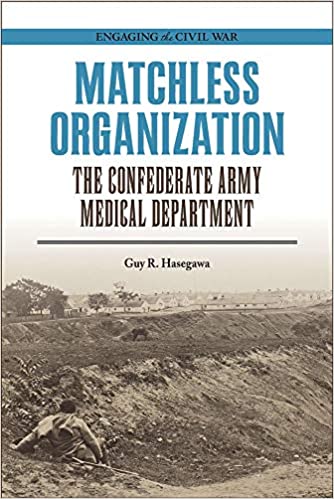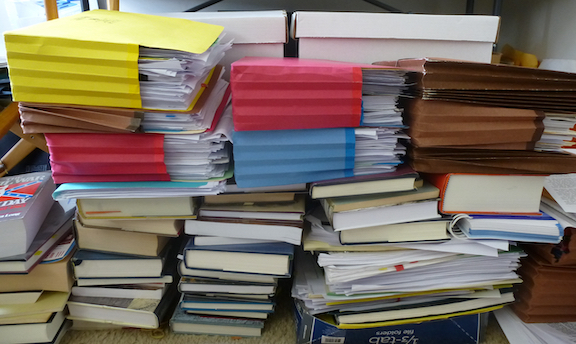Writing Advice and Matchless Organization
 ECW is pleased to welcome Guy Hasegawa, author of Matchless Organization: The Confederate Army Medical Department, the latest in the Engaging the Civil War Series, published by Southern Illinois University Press in partnership with ECW. Part three of three.
ECW is pleased to welcome Guy Hasegawa, author of Matchless Organization: The Confederate Army Medical Department, the latest in the Engaging the Civil War Series, published by Southern Illinois University Press in partnership with ECW. Part three of three.
Novice writers are often advised to (1) create an outline, (2) get thoughts down on paper without worrying initially about elegance, and refine wording later, and (3) revisit a piece of writing after letting it sit awhile. My own method is a variation of this advice.
After I have collected what I think is the bulk of research on the book’s subject, I construct a mental outline by first imagining the major topics—these usually turn into chapters—and how they will be arranged sequentially. For each major topic, I do the same by imagining how its various components will be sequenced and tied together.
While doing this, I refresh my memory about how a likely publisher would like the endnotes and bibliography constructed. (To me, having a recent edition of the Chicago Manual of Style is a must.) I then collect the references for a major topic (chapter) and begin to write in as much detail as I think will be included in the final manuscript. For each statement not considered general knowledge, I create a citation in an endnote and enter the references into a bibliography. To me, it’s vital to tie each fact to reference support early, in case I forget this relationship later. It’s also most efficient to use the correct style for the endnotes and bibliography from the beginning. Because one written statement may require support from multiple sources, tediously recording those sources as I write means that some sections grow quite slowly—say, by a paragraph a day. Other sections, especially those in which paragraphs need no more than a single reference each, come together much more quickly.
Having spent most of my career as an editor, I have a habit of fixing awkward or vague writing as soon as I see it. Thus, instead of jotting my thoughts down quickly and refining the results later, I edit each sentence as I write it. This forces me to express those thoughts with precision and to tie adjoining sentences and concepts together. Writing in detail also allows me to quickly detect logical or knowledge gaps that need to be addressed by rethinking my interpretation or conducting further research. If I’m satisfied at this point that the writing would make sense to a reader, I proceed to the next topic and reserve the fine polishing for later.

One constant challenge is filing paper reference material so it can be found quickly. I create file folders for major topics, but difficulties arise when a single reference pertains to multiple topics. I sometimes make two or three copies of the reference and file them in various folders. Sometimes I jot notes on a folder to remind me to look elsewhere for a particular document. I often write the general topic at the top of a reference so I know where to refile it. Within the document itself, I highlight the cited passages and write a note about their importance. In books, I mark important passages with Post-it flags.
I sometimes create documents that are not meant for publication but instead summarize information that I have gathered or contain typed transcripts of important handwritten papers. For this project, I started some of these more than two years before beginning work on the manuscript. Although I was tempted to use some shorthand way of indicating the sources used, I nevertheless recorded enough information to allow their retrieval, for I assumed I would not remember the meaning of cryptic notations when I returned to them many months later.
Because my work on this project occurred in fits and starts, I often revisited a piece of writing long after I last worked on it. This process made me rethink how ideas were expressed and organized and often necessitated rewording passages or moving them within or between chapters. Although research offers the reward of exciting discoveries, I have found that crafting a manuscript also has its moments, as when various facts and concepts come together and suddenly make sense in ways that didn’t occur to me before.
What seems clear to a writer immersed in a topic may not be understandable to the prospective audience, so before submitting a manuscript to a publisher, I always have it critiqued by colleagues to identify flaws in fact or logic and to suggest improvements in presentation.
I hope that this brief overview provides some idea of how Matchless Organization came together.
Thank you very much for this advice, Guy.
I am reminded of the meme of “What your friends think you do” vs. “What I really do.” Writing is hard work!
Way to go. So needed.
This was incredibly helpful, especially for someone who’s just getting started in academic/professional writing. Thank you for your advice and insights!